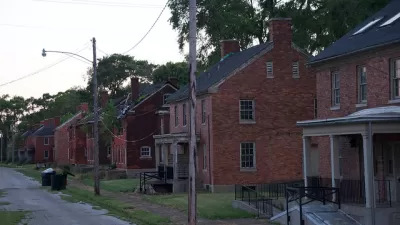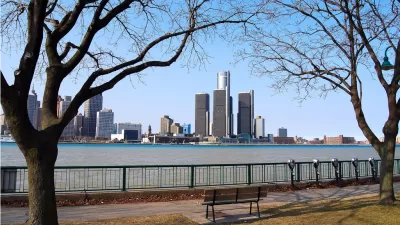Detroit native Pete Saunders makes the case that poor planning put the nail in Motown's casket.
For all the discussion and analysis focused around Detroit's meteoric rise and fall, the most widely accepted assessment – that a confluence of racial tension, vanishing industry, and political corruption caused the city to collapse from within – still misses the mark of this cautionary tale. As Saunders explains, a number of other cities (Buffalo, Cleveland, Chicago, and Pittsburgh, to name a few) faced similar challenges and emerged on the other side in much better shape. So what went wrong?
The problem, Saunders claims, is that leaders in the Automotive Capital of the World left the helm of "sound urban planning and design" in favor of growing its industry, and "let the booming economy to do the work for them." Without an effective, attractive built environment, the problems that so many cities faced in the 20th century became insurmountable.
Saunders enumerates the key problems in Detroit's planning heritage:
1) Poorly defined neighborhoods
2) Outdated housing stock
3) A visually barren public realm
4) A weak downtown
5) Freeway expansion
6) Transit neglect
7) City-wide local elections (rather than by-ward)
8) An industrial landscape that limited growth
9) Untimely annexation
Any effort to revitalize the city that does not first address these problems rests on shaky foundations.
FULL STORY: The Reasons behind Detroit's Decline

Alabama: Trump Terminates Settlements for Black Communities Harmed By Raw Sewage
Trump deemed the landmark civil rights agreement “illegal DEI and environmental justice policy.”

Study: Maui’s Plan to Convert Vacation Rentals to Long-Term Housing Could Cause Nearly $1 Billion Economic Loss
The plan would reduce visitor accommodation by 25% resulting in 1,900 jobs lost.

Planetizen Federal Action Tracker
A weekly monitor of how Trump’s orders and actions are impacting planners and planning in America.

Wind Energy on the Rise Despite Federal Policy Reversal
The Trump administration is revoking federal support for renewable energy, but demand for new projects continues unabated.

Passengers Flock to Caltrain After Electrification
The new electric trains are running faster and more reliably, leading to strong ridership growth on the Bay Area rail system.

Texas Churches Rally Behind ‘Yes in God’s Back Yard’ Legislation
Religious leaders want the state to reduce zoning regulations to streamline leasing church-owned land to housing developers.
Urban Design for Planners 1: Software Tools
This six-course series explores essential urban design concepts using open source software and equips planners with the tools they need to participate fully in the urban design process.
Planning for Universal Design
Learn the tools for implementing Universal Design in planning regulations.
Caltrans
Smith Gee Studio
Institute for Housing and Urban Development Studies (IHS)
City of Grandview
Harvard GSD Executive Education
Toledo-Lucas County Plan Commissions
Salt Lake City
NYU Wagner Graduate School of Public Service





























